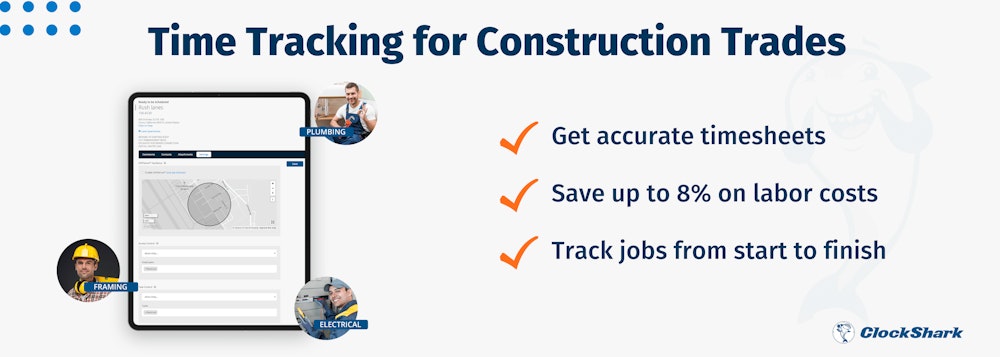Is your construction or field service company doing as well as it used to? Is it performing as well as it should? Can your projects be better managed?
What’s the reason for the fall in business? No doubt you are blaming the poor economic climate, more competitors, competition from overseas, the lack of skilled resources and the government. We can always find an excuse if we look hard enough – even the weather can be blamed!
But have you actually taken a good hard look at how your business is run and managed? Is the company still the same as it was last decade, or maybe even last century? The world is continually changing around us. Technology is evolving. Our new employees have different skills and expectations. Customers are changing and their needs are different. Trends come and go – what customers were paying for 10 years ago is no longer desirable. What are you doing about it?
Are You Losing Customers? Do You Have Spare Capacity?
Many managers are so busy dealing with everyday problems that they don’t notice these changes around them. When they do wake up to what’s happening it’s too late and customers have deserted them, their competitors have overtaken them and their business is losing money.
Businesses have to adapt and change. It’s no good saying “this worked for me 10 years ago” or “we have always done things this way”!
Some businesses think they can simply go through a re-branding exercise to improve business – which they think means changing the company logo and corporate colors. Maybe even adding a catchy tag-line! The center of the city where we live has been dying over the last 5 years. The streets which used to be vibrant and full of activity late into the night are almost deserted at 9 pm.
Businesses are closing down. The city council has now, at great expense, launched a re-branding exercise to brand the city center as vibrant and exciting. But it isn’t! They haven’t changed anything in the city. So what’s this re-branding exercise achieved? People fooled by the re-branding into going into the city center at night can only be disappointed.
We have to change our business from within and bring on a new strategy.
How Can Construction Increase Profitability?
1. Are You Motivated to Change?
Are you still passionate and enthusiastic about the business? If the answer is no then it’s probably time to move on – hand the business over to those who are passionate, or, sell the business. Most of us become tired of doing what we’ve done over the last 20 or more years. You shouldn’t feel embarrassed to call it a day and say you’ve had enough, or maybe just step back slightly and let others take control.
Your lack of passion will negatively impact your staff and your customers will feel it and go elsewhere. Sometimes you have to trust those that work with you – or at the very least give them the opportunity to take on more responsibility.
2. Do You Have the Right People?
How can you improve the team? People change, they get older and less passionate. Customers and projects change requiring different skills. The company changes and requires reorganization and skills. Often moving people to different areas in the business and retraining others can yield improvements. Unfortunately, it may be necessary to let some employees go who are no longer focused, or maybe they are no longer required or are just a negative influence on their co-workers. Talk to your employees and understand their needs and passions. Training and self-improvement can be a great motivator.
3. Reassess the Company-Owned Equipment
Does it meet the company’s current project requirements? Is it all in good working order or are their frequent breakdowns hindering production, frustrating employees and giving the company a bad name? Are maintenance and repair costs running out of control? Get rid of what’s old, unreliable and not suitable to the future needs of the company. New equipment is usually safer, more fuel-efficient, ergonomically better, easier to operate, more suitable to the project’s needs, and all-round more productive.
4. Are You Using the Most Suitable Technology?
There is so much new technology out there that can increase your productivity. Yet many companies are still working on paper and using simple spreadsheets. Apart from productivity improvements our customers expect you to be using the latest technologies. Even the home building and home improvement industry are being revolutionized by 3D modeling and virtual reality.
New customers don’t have to create their own vision of what their new house will look like from a few 2D plans, they can now experience it in 3D – as though their home was already built. What technology do you think your customers want to see? Our customers are becoming younger and more tech-savvy. Importantly our own employees also want to be dealing with the latest technology. They have grown up using smartphones and expect to use them in business as well.
5. What Image Is Your Company Portraying?
Relook at your marketing brochures and website. I was looking at a construction company’s website the other day and was surprised that many of the projects on the website were from projects that were done more than 5 years ago and some more than 10 years ago. Yes, we are proud of our first projects and they do show the history of the company. But you need to see that you are firstly portraying projects which are relevant to the projects you are currently targeting and that projects from the distant past are not drowning out your newer projects.
Not forgetting that architectural fashions change and equipment changes so a customer that’s looking for modern construction will be turned away when they see dozens of photos of buildings built 10, 20 or more years ago using equipment that hasn’t been seen on a construction project in recent times. Then there are the company awards won in 1999 or whenever. They don’t need to take pride of place on your company’s advertising material anymore. Most customers couldn’t care about the distant past they are probably only interested in the last couple of years.
6. Are You Using the Latest Construction Methods and Materials?
Construction methods barely changed over the last few centuries. But over the past few years, we have seen a plethora of new innovations – new materials and new methods. Obviously we have to take care of ensuring these materials meet the local building specifications. Clients are looking for innovative products. Faster construction methods can make us more competitive. Cheaper products add to our competitiveness and our bottom line. But, we must ensure we can still deliver the quality and reliability that our clients expect.
7. Are You Delivering a Quality Product?
Maybe it’s time to take a careful look at the product we’re producing. Poor quality results in rework which is expensive and delays the project. When our clients aren’t satisfied with the quality they’ll take their future business elsewhere. Do our employees understand the quality that’s expected from them? Do they have the skills and equipment to deliver this quality? Are they proud of the work the company produces? Customers remember poor quality, they don’t remember cheap prices. But good quality often doesn’t have to come at additional costs – it just takes a little extra care, pride, and leadership.
8. Are You Working in the Right Market?
Markets change. Your client’s needs change. You need to change. You may have fallen into the trap of being too dependent on particular clients or niche markets. When these clients no longer have work or the niche market dries up or becomes more competitive as other contractors move in you have to move on and develop new markets and clients. Preferably anticipate these changes. Obviously new markets must be researched first because construction is littered with failed companies that went into markets they didn’t understand or markets that weren’t sustainable.
9. What Do Your Customers Really Think About Your Company?
Are you offering value? When last did you visit your customers and have a heart-to-heart chat over a cup of coffee to understand what they think of the company and your employees? Are your employees portraying the company in the way you and your customers expect? Do you send a performance assessment to your clients at the end of projects so they can give feedback on how they believe the company performed on the project?
More importantly, do you actually read the feedback provided and follow up with customers who weren’t satisfied, to apologize, and to find out how you can do things better? We don’t like hearing criticisms, but it’s sometimes good to face these with an open mind so you are able to make the necessary improvements.
Save Time and Money with ClockShark
10. Do You Have a ‘Lessons Learned’ Workshop?
Specifically at the end of projects to assess what was done well and should be replicated on other projects and understand what should have been done better and how we can avoid similar mistakes on future projects? These workshops shouldn’t be about apportioning blame or seen by the project team as a witch-hunting exercise or a way to absolve responsibility for errors. Rather, it’s about learning and improving the way we do business.
Conclusion
Instead of being totally focused on the day-to-day managing of your company take the time to visit your projects. Look at them with new eyes. What can be improved? Are the quality and safety acceptable? Are your employees motivated? Are your customers happy with your company’s performance?
Look around you and see what your competitors are doing. Read articles to learn what customers are doing, and to see new innovations and equipment. Be open to criticism and more importantly be open to change. Change can be challenging, exciting and motivating.
Maybe call in outside help, because new experienced eyes and ears, which aren’t tainted with past baggage, will view things differently to how you do. Let’s make our company as successful as it should be.






